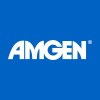
RLS In Adults: Comparing Immediate Release Formulation With Extended Release Formulation Of Ropinirole...
Restless Legs SyndromeRestless Legs Syndrome (RLS)Restless Legs Syndrome (RLS) study in adults comparing immediate release ropinirole with extended release ropinirole over 12 weeks

Total-Body Irradiation and Cyclophosphamide in Treating Patients Who Are Undergoing Donor Stem Cell...
LeukemiaLymphoma1 moreRATIONALE: Giving total-body irradiation and chemotherapy, such as cyclophosphamide, before a donor stem cell transplant helps stop the patient's immune system from rejecting the donor's stem cells and helps stop the growth of cancer or abnormal cells. When the healthy stem cells from a donor are infused into the patient they may help the patient's bone marrow make stem cells, red blood cells, white blood cells, and platelets. Sometimes the transplanted cells from a donor can make an immune response against the body's normal cells. Giving immunosuppressive therapy before or after transplant may stop this from happening. PURPOSE: This phase II trial is studying how well giving total-body irradiation together with cyclophosphamide works in treating patients who are undergoing donor stem cell transplant for hematologic cancer and other diseases.

Study to Assess the Efficacy and Safety of Rifaximin Administered BID in the Treatment of Patients...
Irritable Bowel SyndromeThis is placebo-controlled study of three rifaximin doses in patients with DIBS. Subjects will be randomized to receive daily doses of placebo BID, rifaximin 275 mg BID, rifaximin 550 mg BID, or 1100 mg BID for 14 days. These four groups will subsequently receive an additional two weeks of placebo for a total of 4 weeks of treatment. A fifth group of subjects will receive rifaximin 550 mg BID for a period of 28 days. Subjects who successfully respond to treatment at the end of the 28-day Treatment Phase will be followed in a Post-treatment Phase that includes study visits during Weeks 6, 8, 12 and 16. Subjects who relapse during the Post-treatment Phase will be discontinued from the study.

Arsenic Trioxide, Ascorbic Acid, Dexamethasone, and Thalidomide in Myelofibrosis/Myeloproliferative...
Chronic Myeloproliferative DisordersLeukemia2 moreRATIONALE: Drugs used in chemotherapy, such as arsenic trioxide and dexamethasone, work in different ways to stop the growth of cancer cells, either by killing the cells or by stopping them from dividing. Sometimes when chemotherapy is given, it does not stop the growth of cancer cells. The cancer is said to be resistant to chemotherapy. Giving ascorbic acid may reduce drug resistance and allow the cancer cells to be killed. Thalidomide may stop the growth of cancer cells by blocking blood flow to the cancer. Giving arsenic trioxide together with ascorbic acid, dexamethasone, and thalidomide may kill more cancer cells. PURPOSE: This phase II trial is studying how well giving arsenic trioxide together with ascorbic acid, dexamethasone, and thalidomide works in treating patients with chronic idiopathic myelofibrosis or myelodysplastic or myeloproliferative disorders.

Efficacy and Safety of Pramipexole (PPX) in Moderate to Severe Idiopathic Restless Legs Syndrome...
Restless Legs SyndromeTo evaluate safety and efficacy of pramipexole in the treatment of patients suffering from moderate to severe RLS over 6 weeks under double blinded conditions followed by a 46 week open label or double blind extension.

A Study to Evaluate the Safety and Efficacy of Epoetin Alfa Versus Placebo for the Treatment of...
Acquired Immunodeficiency SyndromeAnemiaThe purpose of this study is to evaluate the effectiveness and safety of epoetin alfa in AIDS patients for the treatment of anemia that is a result of the disease and zidovudine (AZT) treatment. Epoetin alfa is a genetically engineered protein that stimulates red blood cell production.

Determination of Safe Dose of Romiplostim (AMG 531) in Patients With Myelodysplastic Syndromes (MDS)...
ThrombocytopeniaMDS2 moreThe purpose of this study is to evaluate the safety and tolerability of romiplostim in thrombocytopenic patients with low or Intermediate-1 risk MDS. In addition, the study will evaluate the platelet response to romiplostim.

Donor Umbilical Cord Blood Transplant in Treating Patients With Advanced Hematologic Cancer
LeukemiaLymphoma2 moreRATIONALE: Giving chemotherapy, such as fludarabine, busulfan, and etoposide, before a donor umbilical cord blood stem cell transplant helps stop the growth of cancer cells. When the healthy stem cells from a donor are infused into the patient they may help the patient's bone marrow make stem cells, red blood cells, white blood cells, and platelets. Sometimes the transplanted cells from a donor can make an immune response against the body's normal cells. Giving antithymocyte globulin before transplant and tacrolimus and prednisone after transplant may stop this from happening. PURPOSE: This phase I trial is studying how well donor umbilical cord blood transplant works in treating patients with advanced hematologic cancer.

Rilonacept for Treatment of Cryopyrin-Associated Periodic Syndromes (CAPS)
Familial Cold Autoinflammatory Syndrome (FCAS)Familial Cold Urticaria3 moreInflammatory symptoms of Cryopyrin-Associated Periodic Syndrome (CAPS) are due to mutations in a the NLRP-3 gene (previously known as Cold Induced Autoinflammatory Syndrome-1 or CIAS1). These mutations result in the body's overproduction of interleukin-1 (IL-1), a protein that stimulates the inflammatory process. IL-1 Trap (rilonacept) was designed to bind to the interleukin-1 cytokine and prevent it from binding to its receptors in the body.

Nordic Study on the Effects of Growth Hormone (Norditropin SimpleXx) Treatment in Adults With Prader-Willi...
Prader-Willi SyndromeThe aim of this study is to study the effects of GH on body composition, lipid and glucose metabolism, physical performance and safety aspects in adults with PWS.The patients are randomized to either GH or placebo the first year of the study, subsequently followed by two years of GH treatment. the study is performed in Norway, Sweden and Denmark.
